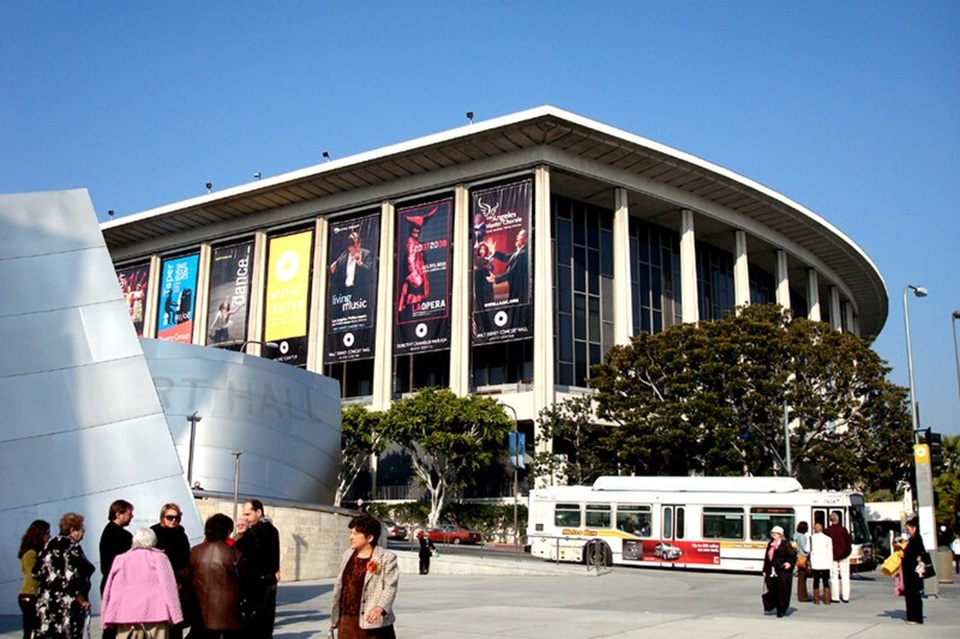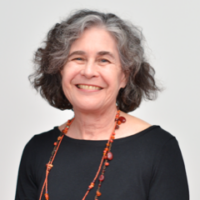
The House That Buff Built by Dennis Broe is the fourth in a series of Harry Palmer mysteries set in Los Angeles in the late 1940s and early 1950s. Broe deftly guides us through a series of interlocking stories including a myriad of characters to solve a murder mystery while revealing the forces that shaped L.A.’s real estate development. We witness forces that brought into being both the suburban boom of postwar America as well as the creation of élite cultural centers for music, theater, dance and opera. His forte is using the narrative to provide a view of 1950s-style corruption and racism that produced our current urban and cultural environments.
Broe is a scholar, educator, novelist and journalist interested in cultural politics and media. He is the author of nonfiction books and articles addressing the state of today’s media as well as a series of detective thrillers, of which The House That Buff Built is the newest. Even the most casual reading shows evidence that Buff is thoroughly researched. Not surprising, as Broe is a professor. He teaches as the École Supérieure de Journalisme in Paris and has previously taught at the Sorbonne and Long Island University in New York. People’s World readers will know him as a deep analyst of today’s film and internet culture, with encyclopedic knowledge and a committed “pro-people” point of view.
The unsolved crimes in Buff center around Los Angeles’s Chinatown, Bunker Hill, East Los Angeles, and the early birthing of suburban Torrance in an era when Los Angeles movers and shakers used eminent domain to remove low-income families from lands which had often been the family home for generations. Whole neighborhoods were displaced ostensibly for affordable housing. We know now that those neighborhoods became the home of world renown sporting and cultural venues leaving displaced families with neither their historic neighborhoods nor any affordable alternative—public housing at the time being scuttled as part of a fearsome “Communist plot.” This is the story of how racism of the most flagrant KKK variety and monied developer and oil interests shaped Los Angeles. If not for these forces we might not be experiencing the affordable housing crisis of our times.
In the early pages of Buff we find detective Harry Palmer in late 1950 being rudely awakened from a sound sleep in his derelict hotel located on Bunker Hill by the sound of a bulldozer. Or, as Palmer eloquently puts it, “God-damn, it’s early, I thought, as I was roused from a pleasant dream in which a buxom hotel clerk with a very suggestive smile hinted that we might retire for the evening to an empty room in a hotel where the paper was peeling off the walls. We were about to enter the room when suddenly a horrific BOOM blew my little piece of paradise and the hotel room apart.”
Palmer is in need of work to support himself and his assistant, Crystal Eckart, so he rouses himself to start the day. The hotel’s proprietor asks Palmer to find out the real reason Bunker Hill is being bulldozed, but his more lucrative job appears later that morning. Sandra Chung, a dentist, asks Palmer to provide some “muscle” when she moves her home from L.A.’s crowded downtown Chinatown to the new middle-class Torrance suburb. A former member of the LAPD, Palmer notes, “All kinds of warning bells went off in my head. Torrance, south of L.A. near the bay and the harbor, was a white enclave known for fiercely resisting outsiders. As for notifying the police, they had a reputation also as making sure that ‘outsiders,’ as they called them, moved along and didn’t disturb the ‘peace and tranquility’ of their white neighborhoods. They were probably going to be no help at all.”
And so it goes as we follow Palmer’s intricately interweaving stories pitting the everyday people of Los Angeles against the rich and powerful—and wannabe rich and powerful—of 1950s Los Angeles.
One thread that Broe flows is the social ambiance of Chinatown, which Sandra Chung was preparing to escape for the sake of her bright, sassy daughter Lyn. He details the criminal activity of a violent, extortionist gang called The Tong, which, like other forces in the community, was almost the direct extension of a hand from domestic politics in China at a time of turbulent change. The Tong represented the warlord-connected Kuomintang of Gen. Chiang Kai-shek. Broe picks up the corner of a curtain covering more progressive tendencies in the Chinese community as a time just months after Mao Tse-tung’s Communists had finally achieved undisputed state power on the Mainland. Broe sensitively picks apart The Tong’s set of allegiances, finding that, like Mao himself at critical junctures, they were capable of tactically adapting ideology to the day’s shifting needs.
Broe is also adept at revealing the language used by developers and racists to whitewash and justify their motives and actions. This language in turn creates the publicly espoused values of our society. Realtors created the name “Chavez Ravine” in order to sell the development of that land—which would become Dodger Stadium. We see this same tactic as parts of Los Angeles are gentrified today. We also witness the use of language such as “urban blight,” “urban renewal,” “home ownership” and “maintenance of property values” to excuse segregationist tactics.
Horatio Everly, a fellow bar mate of Palmer’s, put it most poetically, “Now that the beach is no longer a port, they want to develop the area and turn it into an upscale place for tourists. The term they use that gets them state and federal money is Urban Renewal, but, in our neighborhood, we call it ‘Negro Removal.’”
We also see the more upfront tactics of the KKK. Broe brings in historic African-American figure Charlotta Bass (1874-1969), editor of The California Eagle, to explain. “She told me the latest battlefront was in the San Fernando Valley and other suburbs where the terrain was much like I was describing in Torrance. She recounted an incident of a twelve-foot-high burning cross in Eagle Rock, where I had been recently, watched by 75 people. Then she told the story of a Negro family in Glendale threatened by phone calls while Klan members threw milk bottles on the lawn as they sped by in their cars. She finished by describing the case of a mob of 150 people threatening another family and leaving the lawn and driveway strewn with tacks.”

Charlotta Bass, a sharp reader may recall, was the Progressive Party’s 1952 Vice Presidential candidate running with lawyer Vincent Hallinan. She was the first African-American woman ever to run for national office.
Broe has been described as a neo-noir writer. Neo-noir harkens back to noir fiction and film created from around 1940 through 1960. The work was dark and sinister, and relied on sex and violence for its intrigue. What is the difference between detective fiction and noir? Both genres are situated within corrupt systems, but some critics suggest this difference: In traditional crime fiction the protagonist, in pursuit of justice, emerges as ethically clean. On the other hand, noir is nihilistic in tone, its characters morally questionable. Most important, in noir we do not enjoy an all’s well, Hollywood ending.
Broe presents us with a cynical, hyper self-conscious realism and colorful dialogue while updating many of the classic noir tropes. Noir is not one of my personal go-to genres, but even with my limited exposure, I understand that noir must have a private eye, a femme fatale, and corrupt cops all wrapped up in a broody fatalistic outlook on life. Broe provides a latter-day version of them while incorporating a more modern sensibility. In particular, Broe’s femme fatales are fully developed characters in their own right, and if they are bombshells, they are consciously using sex to sell their products.
For instance, Crystal, Palmer’s assistant, is learning the real estate game from Diane Chestnut, who describes how she acquired her handle, “It’s part of the act. I introduced myself in a bar that way and this guy muttered, ‘I’d like to have your chest rubbing against my nuts.’ I hauled off and kicked him and he fell off his barstool. But he wasn’t far wrong, and the name seems to work.” Throughout the novel Crystal watches how Diane uses sex to make her sales. Crystal debates the tactic throughout the novel and comes to her own conclusion.
As I ended this good read, I couldn’t get this thought out of my mind: Los Angeles isn’t merely this novel’s location. Broe seems to make her into a character. I feel this way in part because our two protagonist detectives, Harry and Crystal, are both partially redeemed by the end of the novel—not always a noir sensibility. But as we leave the novel, Los Angeles feels doomed to repeat her past just as the past has created our present. Or is this perhaps merely Dennis Broe’s invitation to take us on another Harry Palmer adventure?
Dennis Broe
The House That Buff Built
Pathmark Press, 2023
304 pp.
ISBN -13: 9798869058706
We hope you appreciated this article. At People’s World, we believe news and information should be free and accessible to all, but we need your help. Our journalism is free of corporate influence and paywalls because we are totally reader-supported. Only you, our readers and supporters, make this possible. If you enjoy reading People’s World and the stories we bring you, please support our work by donating or becoming a monthly sustainer today. Thank you!










